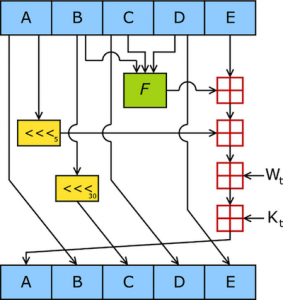Much Faster CryptoJS SHA1 | |
| May 17th, 2014 | |
 |

SHA1 is a pretty crucial part of my current startup, Ultralink. We need (relatively) decent uniqueness calculation and change detection, and need to be able to do it really, really quickly on a lot of content. We picked SHA1 because it’s widely supported, simple to implement, and fast. For the portions of Ultralink that run in Javascript, we needed to include CryptoJS, a third-party library. CryptoJS appears to be the go-to library for cryptographic functions in Javascript, and seemed to fit our bill perfectly. Development was humming along and everything was fine. When we would occasionally do performance passes and stress tests on desktop web browsers, the SHA1 calculation wasn’t even on the radar for perf offenders. Once we started taking a look on iOS devices though, specifically Mobile Safari, it became a completely different story… (more…)









